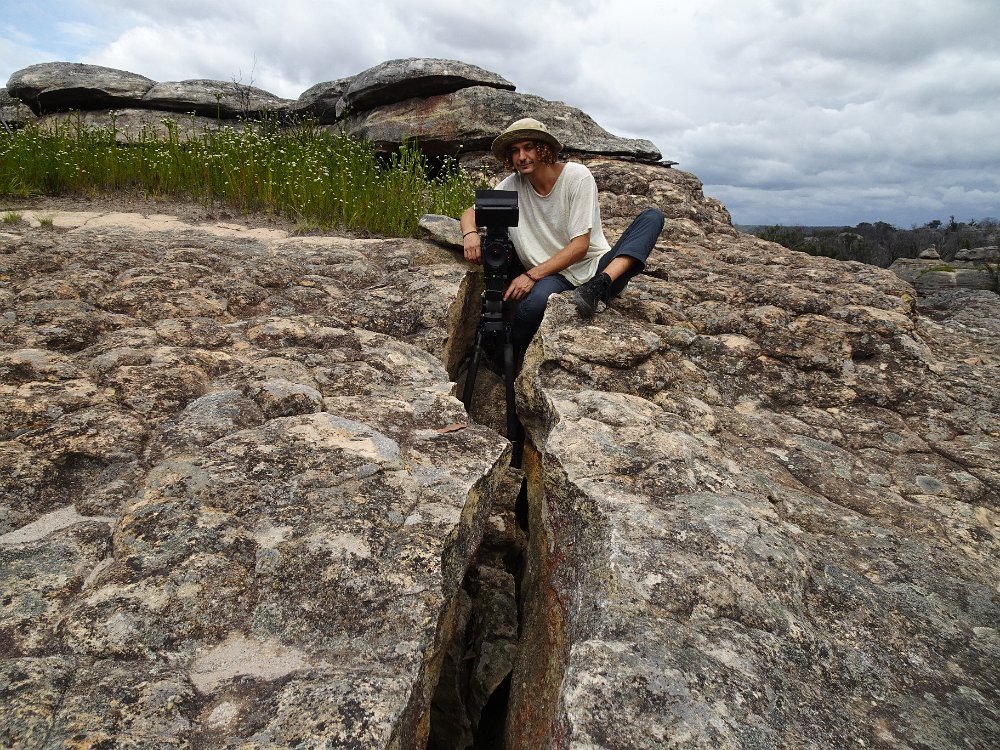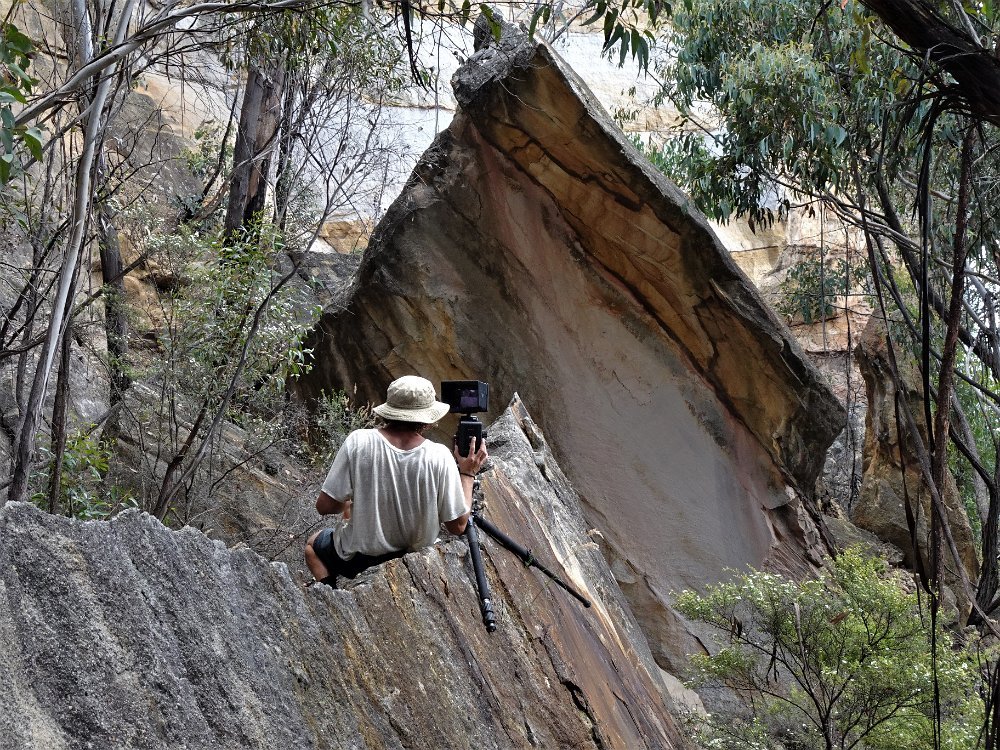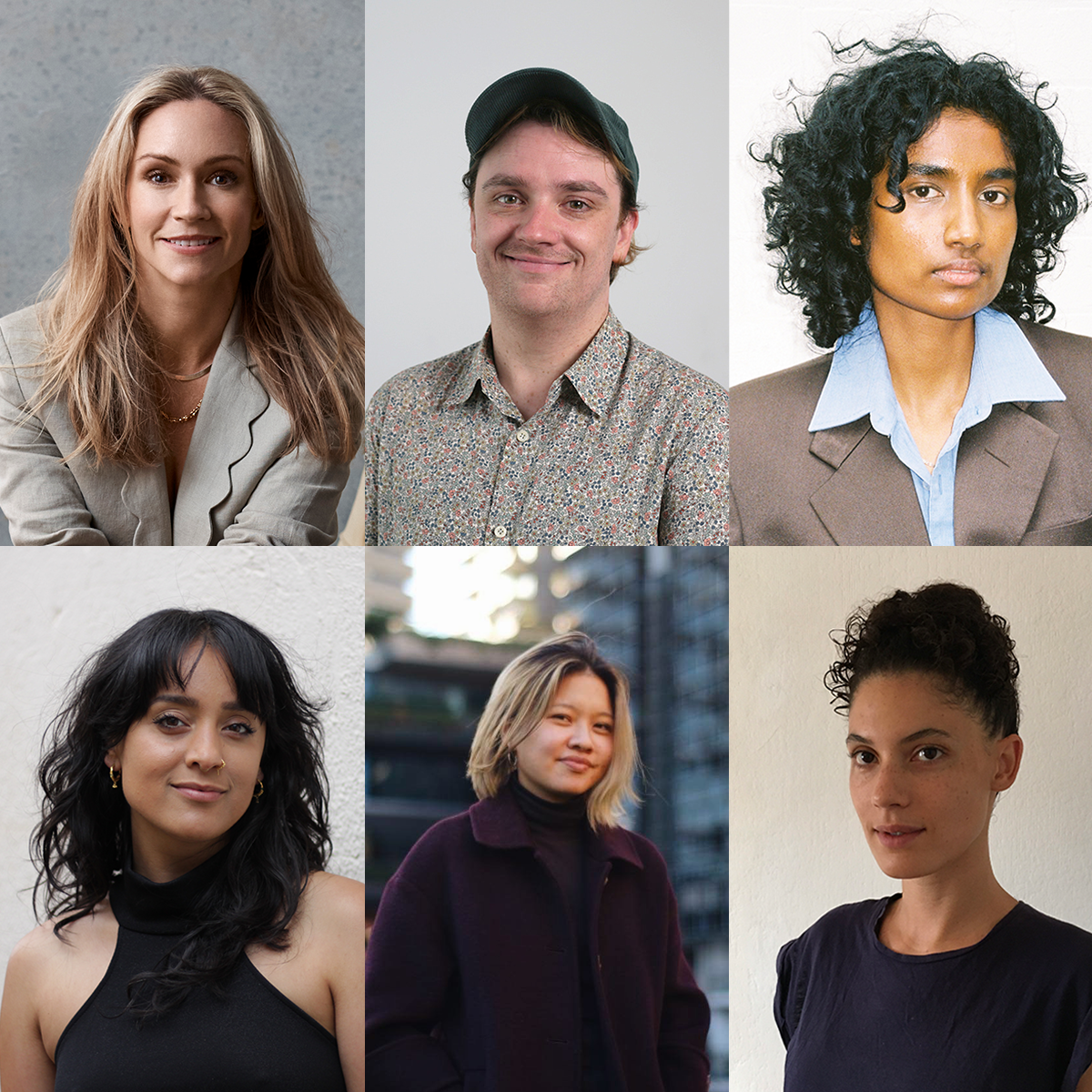Slow cinema in the work of Ryan Andrew Lee
Ryan Andrew Lee is a conceptual new media artist whose practice explores alternative ontologies and epistemologies which are strongly informed by First Nations people and community. His work employs experimental film-making processes including cinéma vérité and slow cinema to present contemplative observations on contemporary environmental and socio-political issues. Lee's work explores interdisciplinary thematics of psychogeography, deep topography and landscapism to suggest deeper sense and perception of place in order to restore and preserve ecological, historical and cultural knowledge and values.
Across his practice, Lee strives to create works that resonate on a deeper level of consciousness, with the intent to unify all things. Ryan holds a BMA (Digital Media) from the University of New South Wales College of Fine Arts and has exhibited at numerous galleries and festivals across Australia and the world.
This conversation took place in May 2022 on the occasion of Ryan Andrew Lee’s exhibition, Temples of Doom.
Interview by Zoe Theodore, Co-Director, Firstdraft, 2022–23.
Ryan Andrew Lee. Courtesy the artist.
Zoe Theodore: Your work Temples of Doom is a reflection of the ecological perils inflicted upon the Australian landscape at the hands of the mining industry, with the sacred First Nations rock-art sites at the Gardens of Stone State Conservation area of the Greater Blue Mountains its focus. Can you tell me about this Country and why it is important to you?
Ryan Andrew Lee: The Gardens of Stone is a pretty unique area on many different levels. I hadn’t actually even visited before starting my residency at Bilpin international ground for Creative initiatives (BigCi), however after chatting with Rae and Yuri Bolotin and heading out bush for a few days I knew that my work had to somehow revolve around this area, especially with what is happening out there with the underground mining.
Ryan Andrew Lee, opening night of Temples of Doom, 2022, single-channel video, 39 minutes 43 seconds. Created in residency for the 2021 BigCi Environmental Award, installation view, Firstdraft, Sydney. Photo: Charlie Hardy.
“I’m working mostly within the scope of documentary and experimental eco-cinema practices, utilising the principles of slow cinema and cinéma vérité.”
ZT: The work is deeply contemplative as both pace and the foreboding sense of isolation work together to evoke the sublime and the eerie through voyeurism. What lineages of art and cinema are you speaking to through this provocation?
SM: I’m working mostly within the scope of documentary and experimental eco-cinema practices, utilising the principles of slow cinema and cinéma vérité.
Ryan Andrew Lee participates in a public program at Bilpin international ground for Creative initiatives (BigCi). Courtesy the artist.
“... the lines are definitely very blurred for me especially as my cinematography work revolves primarily around a documentary-based practice.”
Ryan Andrew Lee, opening night of Temples of Doom, 2022, single-channel video, 39 minutes 43 seconds. Created in residency for the 2021 BigCi Environmental Award, installation view, Firstdraft, Sydney. Photo: Charlie Hardy.
ZT: Your work straddles both contemporary art and film. Can you tell me about how you manage working across both these disciplines? And how does your work in each domain inform the other?
RAL: Both disciplines overlap heavily and the lines are definitely very blurred for me especially as my cinematography work revolves primarily around a documentary-based practice. When working with a camera, certain shooting styles and formulas are going to influence your approach no matter if you are shooting a commercial or a moving image art project. I’ve actually noticed this can sometimes hinder my creativity when working on art projects as I become too rigid and formulaic with my shooting approaches.
Ryan Andrew Lee participates in a public program at Bilpin international ground for Creative initiatives (BigCi). Courtesy the artist.
“Experimental eco-cinema is a cinematic screen approach that creates a space for meditation and contemplation on nature, our connection and unanimity with it, and usually concerns issues that we are facing with its conservation.”
ZT: You have previously described your work as experimental eco-cinema. Can you tell me more about this approach to film and which other practitioners are doing important work in this domain?
RAL: Experimental eco-cinema is a cinematic screen approach that creates a space for meditation and contemplation on nature, our connection and unanimity with it, and usually concerns issues that we are facing with its conservation. There’s a few people working in this space whose work has inspired me greatly, most notably Ron Fricke’s Baraka and Samsara, as well as more recently Jen Peedoms River documentary, in which I was very honoured to have had a few of my shots featured.
Ryan Andrew Lee shooting Temples of Doom on location. Courtesy the artist.
Ryan Andrew Lee shooting Temples of Doom on location. Courtesy the artist.











